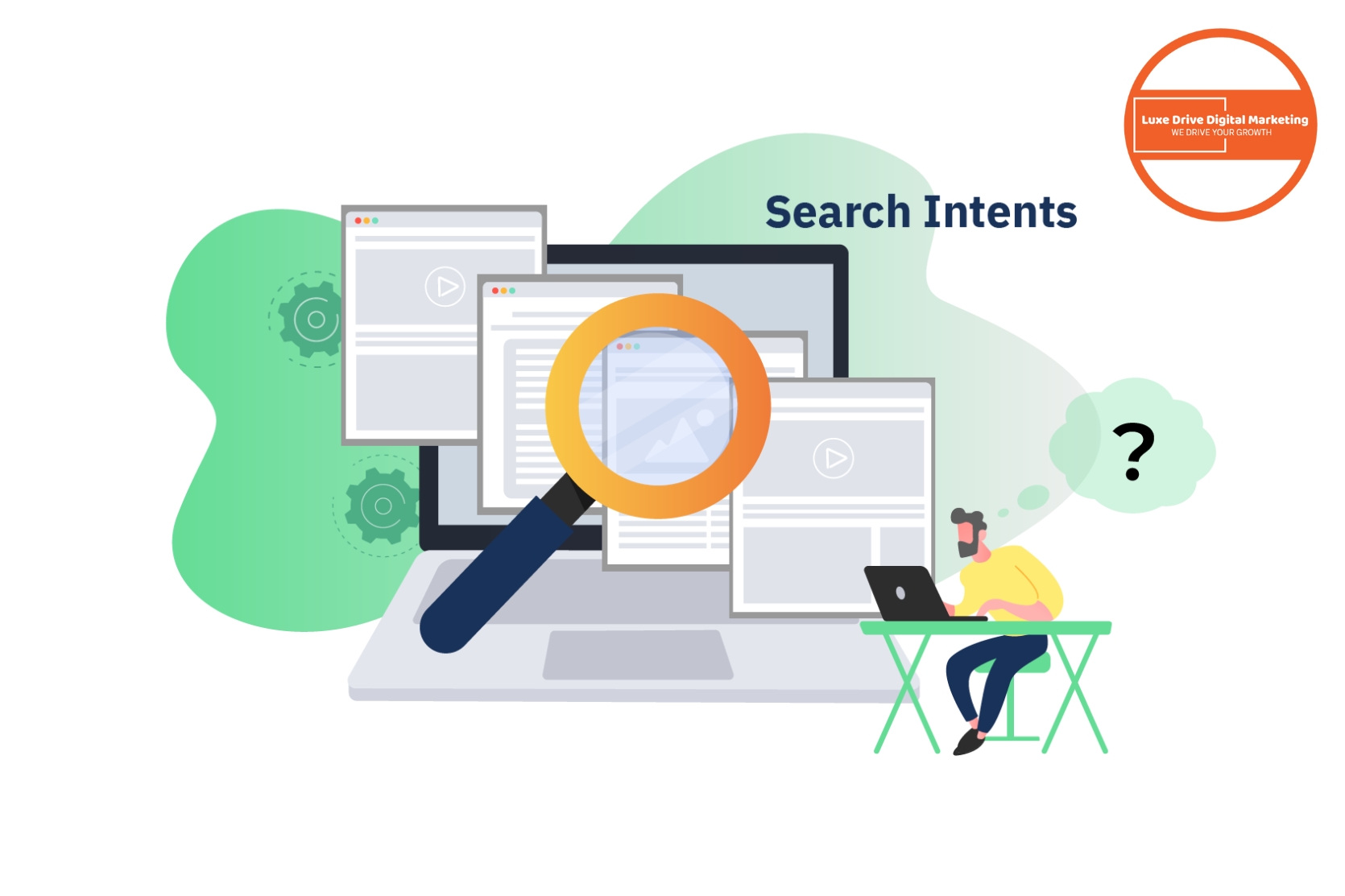Understanding search intent is the cornerstone of effective SEO strategy. When you optimize content for search intent, you’re aligning your material with what users are actually looking for, not just what keywords they’re typing. This guide will walk you through the process of identifying different types of search intent and creating content that satisfies user needs, helping you rank higher in search engine results and connect more meaningfully with your audience.
What is Search Intent and Why is it Important for SEO?
Search intent is the reason behind a search query – the “why” that drives someone to type specific words into a search engine. Understanding search intent is crucial for creating content that resonates with your audience and satisfies their needs.
When you align your content with search intent, you’re essentially answering the exact question or solving the specific problem that brought users to search in the first place. This alignment signals to search engines that your content is relevant and valuable, which can significantly boost your rankings. In fact, search intent has become one of the most important ranking factors in modern SEO, with Google’s algorithms becoming increasingly sophisticated at determining the intent behind a search and matching it with the most helpful content.
The importance of search intent cannot be overstated in today’s competitive digital landscape. When your content matches what users are looking for, you’ll see improvements in key metrics like bounce rate, time on page, and conversion rates – all signals that tell search engines your content deserves to rank highly in search results.
What Are the 4 Types of Search Intent?
Understanding the four types of search intent is essential for creating content that aligns with what users are looking for. Each type represents a different stage in the user journey and requires a specific content approach to satisfy user intent effectively.
Informational intent is when users are seeking knowledge or answers to questions. These searches often begin with “how to,” “what is,” or “why.” For example, someone searching “how to make sourdough bread” has informational intent – they want to learn a process. Content that satisfies informational intent should be comprehensive, educational, and provide clear answers or instructions.
Navigational intent occurs when users are looking for a specific website or page. They already know where they want to go and are using search as a shortcut. Examples include searches like “Facebook login” or “Nike official site.” For navigational queries, your goal should be to ensure your brand-related pages are easily findable and clearly labeled.
Commercial intent reflects users who are researching products or services before making a purchase decision. These searches often include terms like “best,” “review,” “comparison,” or “top.” Someone searching for “best smartphones 2025” has commercial intent – they’re evaluating options. Content that addresses commercial intent should provide detailed comparisons, honest reviews, and help users make informed decisions.
Transactional intent signals that users are ready to complete an action, often a purchase. These searches include terms like “buy,” “discount,” “order,” or specific product names. For example, “buy iPhone 15 Pro Max” clearly indicates transactional intent. Content optimized for transactional intent should facilitate the desired action with clear calls-to-action, streamlined processes, and compelling offers.
How Can You Determine Search Intent for Your Keywords?
Determining search intent for your keywords requires a combination of analysis, research, and strategic thinking. By understanding the intent behind a search query, you can create content that better serves your audience’s needs.
Start by examining the search engine results pages (SERPs) for your target keywords. The types of content ranking on the first page provide valuable clues about how search engines interpret the intent behind those terms. If you see mostly product pages, the intent is likely transactional. If you see informational articles or guides, the intent is probably informational. This SERP analysis is one of the most direct ways to understand how search engines categorize intent for specific queries.
Keyword research tools can also help you determine search intent. Look for modifiers that signal specific intent categories – words like “how,” “what,” and “why” for informational intent; brand names for navigational intent; “best” and “review” for commercial intent; and “buy,” “price,” or “discount” for transactional intent. AI-powered SEO tools have become increasingly valuable for analyzing search intent, as they can process vast amounts of data to identify patterns and intent signals that might not be immediately obvious.
Another effective approach is to conduct content gap analysis to identify what types of content your competitors are creating for similar keywords and whether there are opportunities to better satisfy user search intent. This process can reveal valuable insights about the content type that resonates most with your target audience based on the search term they use.
Why is Search Intent Important for Your SEO Strategy?
Search intent is the foundation of SEO success in today’s algorithm-driven landscape. When you understand and optimize for search intent, you’re essentially aligning your content strategy with how search engines evaluate and rank content.
Google’s algorithms have evolved significantly, with updates like BERT and MUM specifically designed to better understand the intent behind a search query. These advancements mean that keyword density alone is no longer enough – search engines now evaluate whether content truly satisfies the user’s needs. By focusing on search intent, you’re working with these algorithms rather than trying to outsmart them, which leads to more sustainable SEO results.
Furthermore, optimizing for search intent improves user experience metrics that search engines use as ranking signals. When your content matches what users are looking for, they’re more likely to spend time engaging with it, less likely to bounce back to search results, and more likely to convert. These positive user signals tell search engines that your content is valuable and relevant, which can boost your rankings over time.
Search intent optimization also helps you create more efficient content marketing strategies. Rather than producing content based on assumptions about what might rank well, you’re creating content that you know users are actively searching for, with a clear understanding of what they want to see. This targeted approach leads to higher ROI on your content investments and helps you build authority in your niche by consistently delivering what your audience needs.
How Do You Optimize Content for Informational Intent?
Optimizing content for informational intent requires a deep understanding of your audience’s questions and the comprehensive answers they seek. When users have informational search intent, they’re looking to learn, understand, or solve a problem.
To create effective informational content, start by thoroughly researching the questions your audience is asking. Tools like Answer the Public, Google’s “People Also Ask” sections, and forum sites like Reddit or Quora can provide valuable insights into the specific information users are seeking. Your content should address these questions directly and comprehensively, providing clear, accurate, and helpful information that satisfies the user’s curiosity or solves their problem.
Structure is particularly important for informational content. Use clear headings and subheadings that match common search queries, and organize information logically to help users find exactly what they’re looking for. Including a table of contents for longer pieces helps users navigate to the specific information they need. AI tools can help analyze top-ranking content for informational queries, identifying patterns in structure, depth, and presentation that you can adapt for your own content.
Remember that informational content should be authoritative and trustworthy. Include statistics, cite reputable sources, and demonstrate expertise in your field. This not only helps users trust your information but also signals to search engines that your content is high-quality and reliable. Visual elements like diagrams, infographics, and videos can enhance understanding and engagement, making your informational content more valuable to users and more likely to rank highly in search engine results.
How Can You Optimize for Commercial and Transactional Intent?
Optimizing for commercial and transactional intent requires a different approach than informational content, as these users are further along in the buying journey and have specific purchase-related goals in mind.
For commercial intent, where users are researching products or services before making a decision, focus on creating detailed comparison content, honest reviews, and comprehensive buying guides. Include specific product features, pricing information, pros and cons, and clear comparisons between options. Use tables, charts, and visual elements to make comparisons easy to understand at a glance. Keywords for commercial intent often include terms like “best,” “top,” “review,” or “comparison,” so incorporate these naturally into your headings and content.
When optimizing for transactional intent, the goal is to make the purchase or conversion process as smooth as possible. Your content should include clear calls-to-action, detailed product information, pricing details, and any information that might help overcome purchase hesitations. Transactional pages should load quickly, be mobile-friendly, and have streamlined checkout processes. Keywords for transactional intent typically include terms like “buy,” “order,” “discount,” or specific product names and models.
For both commercial and transactional intent, social proof is extremely valuable. Include customer reviews, testimonials, trust badges, and case studies to build confidence in your offerings. AI can help analyze user behavior on these pages, identifying potential friction points in the customer journey and suggesting optimizations to improve conversion rates. Remember that users with transactional search intent are often ready to make a decision, so your content should make that decision – and the subsequent action – as easy as possible.
What Role Does AI Play in Optimizing for Search Intent?
AI has revolutionized how we understand and optimize for search intent, providing powerful tools that can analyze vast amounts of data to uncover insights about user behavior and content performance.
Modern AI tools can analyze search queries to determine intent patterns that might not be immediately obvious to human marketers. These tools can process thousands of related keywords and categorize them by intent, helping you develop more targeted content strategies. AI can also analyze top-ranking content for specific search queries, identifying common elements, structures, and topics that appear to satisfy the intent behind those searches.
Content creation has been transformed by AI as well, with tools that can help generate content that aligns with specific intent categories. While human oversight remains essential for quality and accuracy, AI can help scale content production while maintaining focus on satisfying user search intent. Some advanced AI tools can even predict how well content will perform for specific intent-based queries before publication, allowing for optimization prior to launch.
Search engines themselves increasingly use AI to understand search intent, with algorithms becoming more sophisticated at interpreting the meaning behind queries. Google’s BERT and MUM updates, for example, use natural language processing to better understand the nuances of human language and the intent behind searches. By leveraging AI in your own content optimization process, you’re essentially working in harmony with the AI systems that power search engines, creating content that these systems are more likely to recognize as valuable and relevant to user needs.
How Do You Adapt Your Content Strategy Based on Search Intent?
Adapting your content strategy based on search intent requires a flexible, data-driven approach that puts user needs at the center of your content planning process.
Begin by conducting a comprehensive audit of your existing content, categorizing each piece by the intent it currently serves and identifying gaps where certain intent types are underrepresented. This analysis can reveal opportunities to create new content or modify existing pieces to better align with search intent. For example, if you discover that most of your content serves informational intent but you’re lacking commercial intent content, you might prioritize creating comparison guides or product reviews.
Develop content templates or frameworks for each intent category to ensure consistency in how you address different user needs. For informational content, this might include question-based headings, comprehensive answers, and educational visuals. For commercial intent, your template might include comparison tables, pros and cons lists, and decision-making guidance. Having these frameworks in place helps streamline content creation while ensuring each piece is optimized for its intended purpose.
It’s also important to recognize that search intent changes over time, both seasonally and as markets evolve. Implement regular monitoring of search trends and SERP changes for your key topics to identify shifts in intent. AI tools can be particularly valuable here, helping you spot emerging patterns and adapt your content strategy accordingly. This proactive approach ensures your content continues to align with search intent even as user needs and search behaviors change.
What Are Common Mistakes When Optimizing for Search Intent?
Even experienced marketers can make mistakes when optimizing for search intent. Being aware of these common pitfalls can help you avoid them and create more effective content.
One of the most frequent mistakes is assuming intent based solely on keywords without verifying through SERP analysis. For example, a marketer might assume that “digital cameras” is a transactional term and create a product page, when SERP analysis might reveal that users are actually looking for informational content about how digital cameras work. Always check what’s currently ranking to confirm the actual intent behind search queries.
Another common error is creating hybrid content that tries to satisfy multiple intent types simultaneously, resulting in content that doesn’t fully satisfy any of them. While some overlap can occur naturally, each piece of content should have a primary intent focus. If you’re trying to address both informational and transactional intent in the same piece, consider creating separate content pieces that can be linked together to guide users through their journey.
Many marketers also fail to recognize intent shifts over time. A query that once had informational intent might evolve to have more commercial intent as a market matures, or seasonal factors might temporarily change the intent behind certain searches. Regular monitoring of SERPs for your key terms is essential to catch these shifts and adapt your content accordingly.
Finally, some marketers focus too narrowly on keywords and forget about the actual humans behind the searches. Remember that search intent is ultimately about understanding what real people want to accomplish. Spend time talking to customers, analyzing support questions, and engaging with your community to develop a deeper understanding of the intent behind a search query and how you can create content that truly meets the need.
How Can You Measure Success in Search Intent Optimization?
Measuring the success of your search intent optimization efforts requires looking beyond traditional SEO metrics to evaluate how well your content is actually satisfying user needs.
Start with ranking improvements for your target keywords, but don’t stop there. Look at user engagement metrics that indicate whether your content is meeting the intent behind the search. For informational content, metrics like time on page, scroll depth, and related page views can indicate whether users are finding the information they need. For commercial and transactional content, conversion rates and goal completions are more relevant measures of success.
Click-through rates (CTR) from search results can also provide insights into how well your content aligns with search intent. If your page ranks well but has a low CTR, it might indicate that your title and meta description aren’t effectively communicating how your content satisfies the user’s intent. Conversely, a high CTR with a high bounce rate might suggest that your content isn’t delivering on the promise made in the search results.
Set up intent-specific KPIs based on the type of content you’re creating. For example, informational content might be measured by newsletter sign-ups or return visits, while commercial intent content might be measured by product page views or addition to wishlists. Transactional content would naturally be measured by conversions and sales. AI analytics tools can help identify patterns in user behavior that indicate whether your content is successfully satisfying the intent behind different types of searches.
Key Takeaways for Optimizing Content for Search Intent
- Understand the four types of search intent: Informational, navigational, commercial, and transactional intent each require different content approaches.
- Analyze SERPs to determine intent: Look at what’s currently ranking to understand how search engines interpret the intent behind specific queries.
- Create intent-specific content: Develop dedicated content that fully satisfies each type of intent rather than trying to create hybrid pieces.
- Structure matters: Use headings, subheadings, and organization that match how users with specific intents want to consume information.
- Leverage AI tools: Use artificial intelligence to analyze intent patterns, optimize content, and measure performance.
- Monitor intent shifts: Regularly check for changes in how search engines interpret the intent behind your target keywords.
- Measure beyond rankings: Look at engagement metrics and conversions to determine if your content truly satisfies user intent.
Conclusion
Mastering search intent optimization is crucial for SEO success in today’s competitive digital landscape. When you understand that search intent is the motive behind every query, you can create content that better serves your audience’s needs while signaling relevance to search engines. The four types of search intent – informational, navigational, commercial, and transactional – provide a framework for developing content that aligns with what users are actually looking for.
By conducting thorough keyword research with intent in mind, analyzing search engine results, and leveraging AI tools to understand user behavior, you can determine search intent with greater accuracy and adapt your content strategy accordingly. This understanding allows you to create relevant content that satisfies user intent, helping your pages rank highly in search results while delivering genuine value to your audience.
Remember that search intent changes over time, and staying attuned to these shifts is essential for maintaining SEO performance. By regularly analyzing search intent categories, performing content gap analysis, and measuring how well your content meets the intent behind the search, you can continuously refine your approach. Ultimately, when you optimize your content for search intent, you’re not just improving your SEO – you’re creating a better experience for users that builds trust, authority, and lasting relationships with your audience.



